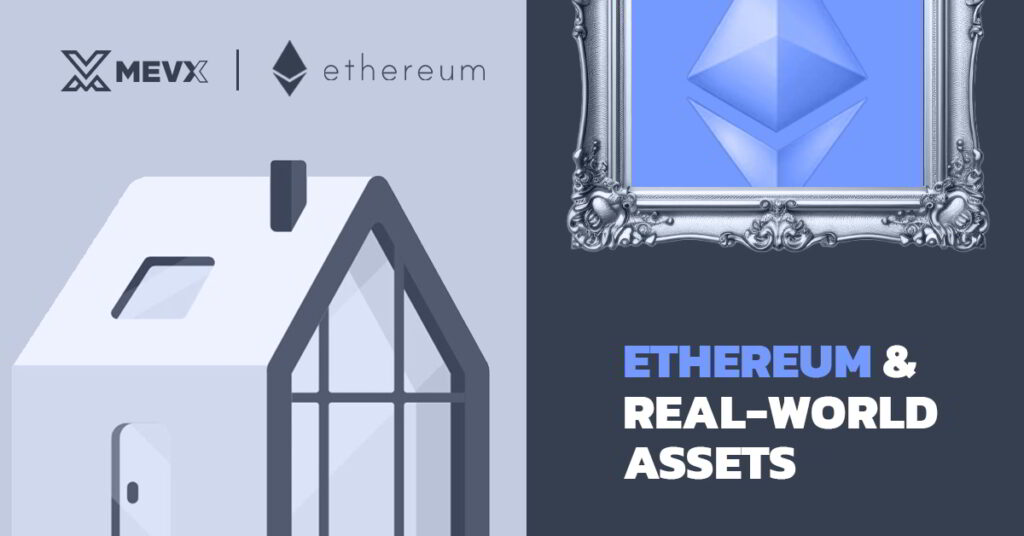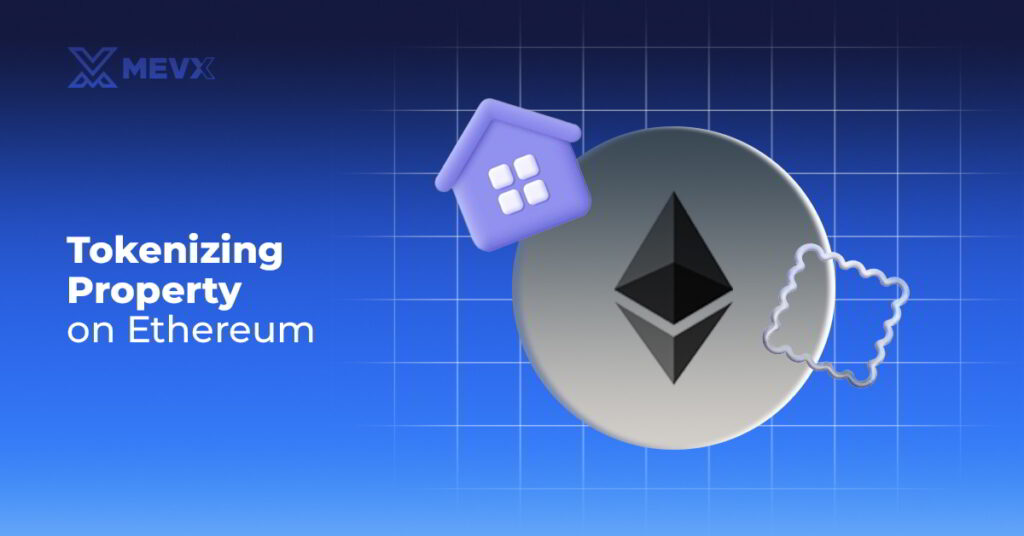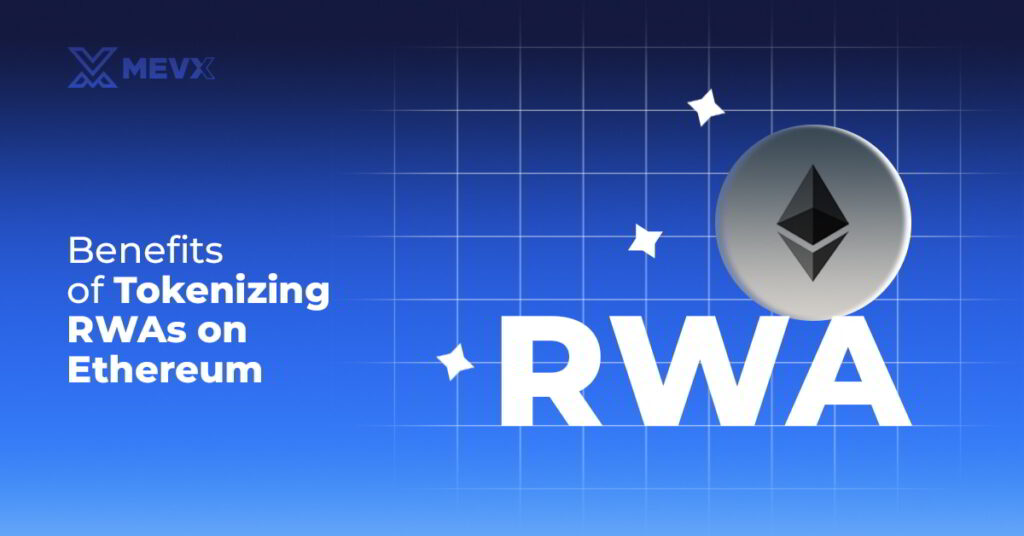DeFi is changing the way that we interact with traditional assets and Ethereum is taking the forefront in tokenization. As it converts Real-world assets (RWAs) like property, artwork, and so on into digital tokens on its platform, Ethereum is not only presenting these types of assets, but also making them tradable on the global platform. The technology is revolutionizing industries, taking investment to the masses, and unlocking new avenues. We elaborate in this article how Ethereum is making possible the tokenization of RWAs, its benefits and challenges, and the promising potential of the technology.

What is Tokenization on Ethereum?
Tokenization is the method by which the property or right in physical property, such as in the form of a painting, property, or commodity, is represented in the form of a digital token on a blockchain. Smart contracts by Ethereum, self-executing contractual terms written directly in lines of code, enable safe and transparent issuance and control of such tokens. It enables assets to be split into fractions that are tradable and enhance the liquidity in assets previously unsharable or unsaleable.
Ethereum token standards are the key in this regard. ERC-20 supports fungible tokens appropriate to property shares, while ERC-721 supports non-fungible tokens (NFTs) good enough for one-of-a-kind assets like paintings. ERC-3643, specific to RWAs, supports compliance with legal obligations and ease of integratability with DeFi platforms, making Ethereum one of the better platforms to tokenize assets.
Tokenizing Property on Ethereum

Real estate, historically illiquid and exclusive due to big capital requirements, is being transformed by Ethereum’s tokenization. A property may be split into digital tokens with partial ownership, and multiple investors may own portions of it without purchasing the entire asset. With platforms like RealT, one has the ability to invest in rent-yielding real estate that has been tokenized, split proportional rents, and sell stakes in secondary markets. A New York city condo, for instance, was tokenized on Ethereum and global investors were able to place investments in digital shares. Real estate became more affordable as global investors were able to purchase digital shares.
The ERC-3643 standard is used in property tokenization in order to fulfill advanced legal and regulatory needs. It supports programmable smart contracts that include ownership and compliance history such that the tokens are compliant with local property legislation and security laws. This standard builds trust and supports easy trading, and real estate is able to act as a liquid asset class.
Tokenizing Art with Ethereum
The historically elitist, scam-ridden world of art is today revitalized by the tokenization by Ethereum in the shape of NFTs. NFTs, created on the ERC-721 standard, are one-of-a-kind works of art that ensure provenance and authenticity with unalterable blockchain records. With tools like Maecenas, investors are now able to purchase fractions of masterworks like Basquiat or Monet and resell them on second markets. This is bringing democratic access to investing in art to the world.
Tokenized artwork is also beneficial to creators. Files such as pictures, videos, or audio files may be turned into NFTs, and creators may keep the ownership, and there is even the potential to earn resale royalties. The decentralized nature of Ethereum provides protection with total visibility of all property and trading history, eliminating the potential for forgery and undue fees by middlemen in the traditional marketplace.
Beyond Property and Art: Other Tokenized Assets
Ethereum’s tokenization encompasses a wide variety of assets and unlocks investment opportunities:
- Commodities: Assets such as gold, crops, or petroleum may be tokenized and traded in digital shares by investors, without the need for physical storage. Tokenized gold, for instance, giving investors access to the value of bullion with the convenience of digital trading.
- Intellectual Property: Tokenization of music royalties, patents, or movie rights allows creators to generate new revenue streams. Fans can invest in tokenized music rights, with profits from streams being shared.
- Financial Instruments: Stocks, bonds, or private equity may be tokenized, providing 24/7 trading and fractionable ownership, increasing liquidity in otherwise illiquid assets.
- Unique Assets: Whether fine wines or bridge infrastructure, the utility of Ethereum allows one to tokenize almost anything with defined parameters of risk.
These applications leverage Ethereum’s smart contracts to create interoperable tokens that integrate with DeFi platforms, expanding the scope of tokenized investments.
Benefits of Tokenizing Real-World Assets on Ethereum

Tokenization on Ethereum offers transformative advantages, redefining asset management and trading:
- Increased Liquidity: Illiquid assets like property or art become tradable on secondary markets, enabling faster sales and better price discovery.
- Fractional Ownership: Investors can own portions of high-value assets, lowering barriers and making wealth-building accessible to more people.
- Global Accessibility: Tokens can be traded worldwide without intermediaries, reducing costs and enabling diverse investors to participate.
- Transparency and Security: Ethereum’s blockchain ensures all transactions are immutable and verifiable, minimizing fraud and building trust.
- Automation: Smart contracts streamline processes like dividend payments or royalty distributions, cutting administrative costs.
These benefits are especially impactful for industries like real estate and art, where traditional markets often face high costs, exclusivity, and opacity.
Challenges of RWA Tokenization
Despite its promise, tokenizing RWAs on Ethereum is faced with challenges:
- Regulatory Complexity: Global regulations on securities, property, and digital assets vary, creating compliance challenges. Platforms must navigate anti-money laundering (AML) and know-your-customer (KYC) requirements.
- Security Risks: Smart contracts require rigorous audits to prevent hacks or errors, as vulnerabilities could lead to significant losses.
- Legal Recognition: Many jurisdictions lack frameworks to recognize digital ownership of RWAs, complicating enforceability and adoption.
- Adoption Barriers: Broad adoption may be delayed due to unfamiliarity or trust issues by traditional investors with tokenized assets.
These are drivers of adoption and regulatory certainty but are being tackled by specifications like ERC-3643 and industry alignments.
The Future of Tokenization on Ethereum
The growth of the tokenized market by RWA will be exponential and will be a multi-trillion-dollar market by the year 2030. Future improvements in Ethereum, including scaling and lower fees, will keep supporting tokenizing to be more efficient and less expensive. Tokenizing legacy financial assets on Ethereum is already in play with initiatives like that of Ondo Finance and BUIDL by BlackRock, and therefore there is growing institutional participation.
With increasingly advanced regulation, there will be more jurisdictions that are RWA-friendly and that will recognize ownership, accelerating adoption. Innovation in DeFi, like lending against tokenized assets or taking them as collateral, will draw the RWAs deeper into the world of blockchain. Ethereum, with its established ecosystem and strong developer environment, will remain the platform of choice to tokenize the RWAs.
Conclusion
Ethereum is transforming the way that we own and trade real-world assets with tokenization, opening up property, artwork, and others to investors all around the world. With protocols and smart contracts on Ethereum like ERC-20, ERC-721, and ERC-3643, it is possible to facilitate fractional ownership, enhanced liquidity, and enhanced transparency. There are still challenges regarding regulation and security risks involved, but the potential to disrupt traditional markets is overwhelming. Whether property investors or painters and owners of art, Ethereum’s tokenizing makes it possible to create new opportunities for wealth generation.
Share on Social Media:
